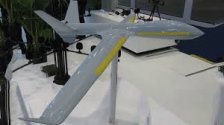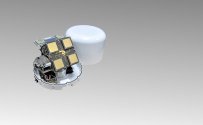@WTAN @Oldschool looks like a 28nm chips to me. The chip was released by the China Electronics Technology Group Corporation No.38 Institute.
rom CnTechPost
China-made millimeter wave chip sets world record for detection distance
February 19, 2021
A Chinese research institute released a high-performance 77 GHz millimeter wave chip and module on February 17, with a detection distance of 38.5 meters, setting a new global record for the longest detection distance of a millimeter-wave packaged antenna.
The chip was released by the China Electronics Technology Group Corporation No.38 Institute in 2021 International Solid-State Circuits Virtual Conference ( ISSCC), and for the first time, two 3-transmitter, 4-receiver millimeter-wave chips, and 10-way millimeter-wave antennas were integrated in a single package, according to the
.
It implements a multi-channel millimeter-wave radar transceiver front-end in a 24 mm × 24 mm space and creatively proposes a dynamically tunable fast broadband chirp signal generation method.
The chip also uses multi-feed antenna technology in the package to substantially increase the effective radiation distance of the package antenna, providing a small size and low-cost solution for proximity smart sensing, the report said.
It uses a CMOS process to integrate three transmit channels, four receive channels, and radar waveform generation in a single chip, which has special advantages in terms of fast broadband radar signal generation and supports multi-chip cascading and building larger radar arrays.
Fan-out-based wafer-level packaging is a mainstream implementation of packaged antennas, and major international companies have developed chip products with integrated packaged antennas based on this technology.
The institute will further optimize the millimeter-wave radar chip and change it according to the expansion of application requirements and technological advances to provide a one-stop solution for specific application scenarios.
ISSCC is considered the "Olympics" in the field of integrated circuits and was founded in 1953 by Bell Labs, which invented the transistor, and other organizations. In its 60-year history, many milestone inventions in the history of integrated circuits have debuted here



